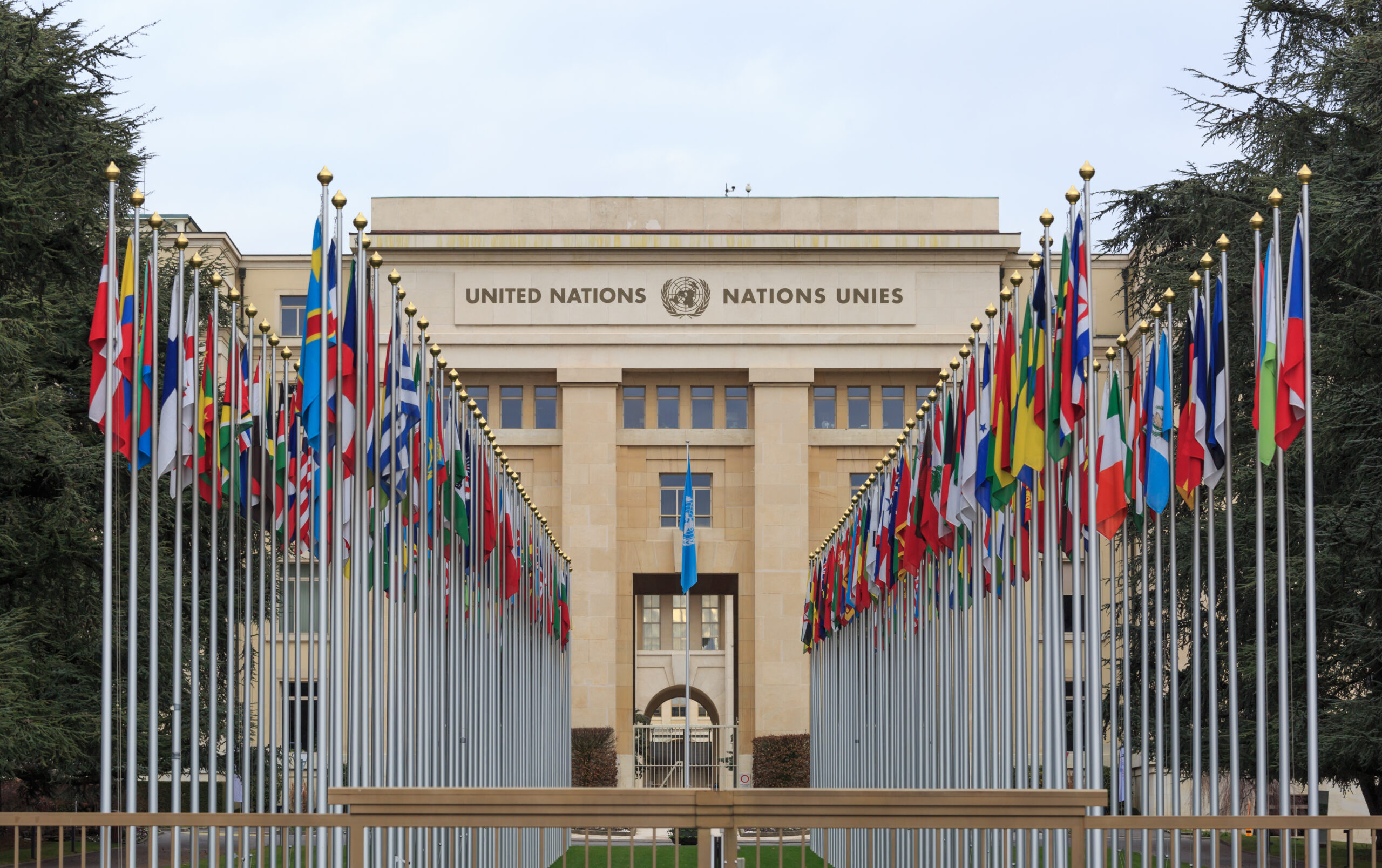White Paper On Europe’s Digital Infrastructure Needs: Europe’s Open Internet Still At Risk

Main takeaways:
- The EC White Paper surreptitiously entertains the introduction of Internet network usage fees in different semi-hidden ways;
- Each approach would drive up costs of cloud services for consumers and businesses and reduce competition;
- All stakeholders should respond to the ongoing open consultation, to avoid the future introduction of detrimental proposals.
This February, the European Commission published a White Paper on Europe’s digital infrastructure needs. The 40-page document makes references to spectrum, satellites, telecoms consolidation and the peering market, leaving readers puzzled and filled with questions on the actual goal behind the document.
Between the lines, the White Paper unfortunately ignores the responses to the previous Commission consultation on the telecoms sector, looking again to reopen the door for network usage fees. Once again, this risks harming the whole European digital sector to the benefit of a select few. Certain scenarios would create a high likelihood of various forms of fees being included in potential new legislation, regardless of the negative impact and lack of justification for such changes. Let’s review how this could happen.
The Bizarre Case for a “Level Playing Field” for Telcos and Cloud
The European Commission’s White Paper points to “progressing convergence between electronic communications networks and cloud” which would require, in the Commission’s view, a so-called level playing field: “a rethinking of the scope of application of the electronic communications regulatory framework” (i.e. the European Electronic Communications Network directive (EECC)).
However, this narrative of convergence between cloud and telecommunication services is flawed in its premise, unjustified in its goal, and essentially a back door to the introduction of network usage fees.
Flawed Premise: Comparing Apples with Pears
To quote DG CNECT’s Director General Roberto Viola, who intervened at the BEREC stakeholder forum in late March, “for us there is no distinction between a cloud operator and a telecoms operator […] so there cannot be a regulatory difference.”
Industry and facts disagree: telecommunication services are fundamentally different from cloud services and operate in different fields. While telecom companies mainly provide connectivity services, cloud providers offer computing resources for various sectors, e.g. automotive, healthcare, e-learning, providing multiple functionalities to their customers, such as computing, storage, machine learning and security services.
Put simply: cloud providers are like a restaurant’s kitchen: they have the infrastructure (employees and tools) to create and prepare various dishes (cloud services). Telecom providers are like the delivery service which brings the dishes (cloud services) to your door (device) quickly and reliably. Just because both are involved in getting food to you, they aren’t the same.
Among cloud services, only a limited number are used to “cloudify” telecommunications networks. It’s important to note that just because some telcos are consuming cloud services, this does not change cloud providers into telecommunications providers. Similarly, cloud providers can’t possibly be considered banks or car manufacturers simply because they provide services to those industries or bundle services together.
Unjustified Goal: Regulating the Regulated
According to the White Paper, “the Commission may consider broadening the scope and objectives of the current regulatory framework to ensure […] equivalent rights and obligations for all actors and end-users of digital networks”. Translation: the rules of the EECC shall be extended to cloud services, as these are not sufficiently regulated.
Given the sheer number of tech regulations passed over the last 5 years, it can be challenging for anyone to keep track of the rules and how they apply. To assist, here’s a non-exhaustive list of regulations that apply to cloud providers, covering different angles of their operations:
- Obligation towards consumers: cloud providers comply with the Digital Services Act, the Product Liability Directive, the Digital Content Directive, the Consumer Rights Directive, the Omnibus Directive and the Unfair commercial practice directive.
- Security regulations include: NIS2, the Cybersecurity Act (including the upcoming EUCS), the Cyber Resilience Act.
- Switching and Interoperability regulations include the Data Act, the European Interoperability Framework (which guides public administration in choosing and utilising cloud services).
A distinct set of rules for telecoms should focus on network access under fair, reasonable and non-discriminatory terms. But the fact that there may not be equivalent rules for cloud providers doesn’t mean this is needed. In fact, as BEREC points out, small and large cloud providers always have, and will continue to operate free and open peering policies with any ISPs who request it. All of this is happening under far more favourable conditions than Code’s FRAND regime to ensure telecom operators’ fair access to telecom infrastructure and resources. If it ain’t broke, there’s no need to fix it.
The Return of Network Usage Fees (they never left)
Reading between the lines, it is clear that the only concrete outcome of extending the EECC to cloud providers would be the introduction of network usage fees. This and other measures designed to boost the bottom line of the old telecom incumbents appear to be the main possible outcomes of some of the proposals.
The EECC currently includes an arbitration mechanism for peering disputes (Article 26 EECC). This means companies can settle disagreements about internet traffic exchange through a third party (i.e. NRAs in the current Code). Sounds reasonable, right? But here’s the catch: if applied to cloud providers, this could pave the way for network usage fees, i.e. the toll road for data travelling to and from the cloud.
Who has been asking – since the beginning of the “fair share” debate – for a dispute resolution mechanism for CAPs and cloud providers? Indeed ETNO, from their very first Axxon report. Interestingly, they listed the arbitration mechanism as one of the “Possible tools for a direct compensation”. As ETNO’s paper itself admits, and Stanford law professor Barbara Van Schewick explains, an arbitration mechanism is just another way of introducing network usage fees on multiple sectors and consumers – leading to all the negative consequences we all know about.
Extending the EECC to cloud providers is a Trojan horse for network usage fees. Plain and simple. These fees would ultimately burden consumers and businesses by driving up the cost of cloud services. Is this really a way to incentivise the EU digital decade target of 75% of EU companies using Cloud technologies?
A Disguised Attempt to Disrupt the Well-Functioning IP Interconnection Market
The second slippery slope in the White Paper, potentially leading to network fees, is the looming prospect of regulatory intervention on the IP interconnection market.
The European Commission’s White Paper states that the “the contractual relationships between market actors [ISPs and CAPs] generally functions well and so do the markets for transit and peering”. However, for some reason, the paper adds that “it cannot be excluded that the number of cases in the future will increase. Should this be the case, subject to careful assessment, policy measures could be envisaged to ensure swift resolution of disputes”.
This paragraph is particularly concerning when read in combination with the statement by DG CNECT’s Director General during the BEREC stakeholder forum: “also interconnection should be on a level playing field. The rules for interconnection should apply for everyone.”
To which we must ask: what is there to be fixed if nothing is broken?
BEREC has extensively reported on the lack of legal or economic evidence that justifies a regulatory intervention in the peering market. Network fees come with a long list of well-documented downsides. So what is the purpose of all this? To make sure telecoms’ investors keep growing their deep pockets?
You can’t fault the incumbents for their ambition to grow their money at the expense of other sectors: Telefonica’s CEO is already working on it: “Anyone who consumes more than 5% of traffic will have two years to get below it [..]. If after two years he still consumes more than 5%, then we should already be talking about compensation.”
Make Your Voice Heard, Again
The European Commission’s White Paper fails to present a vision for the telecoms sector which includes all its players, such as alternative telecom operators, European businesses and consumers. The paper is tailored to meet the needs of a select few, to the ultimate harm of all, through the well known threat of network usage fees.
All stakeholders should participate in the consultation open until the 30th of June 2024, to make sure the White Paper will be the basis for future proof, inclusive and positive solutions for Europe’s telecom and digital market, and not the beginning of yet another legislation which could create more harm than good.








